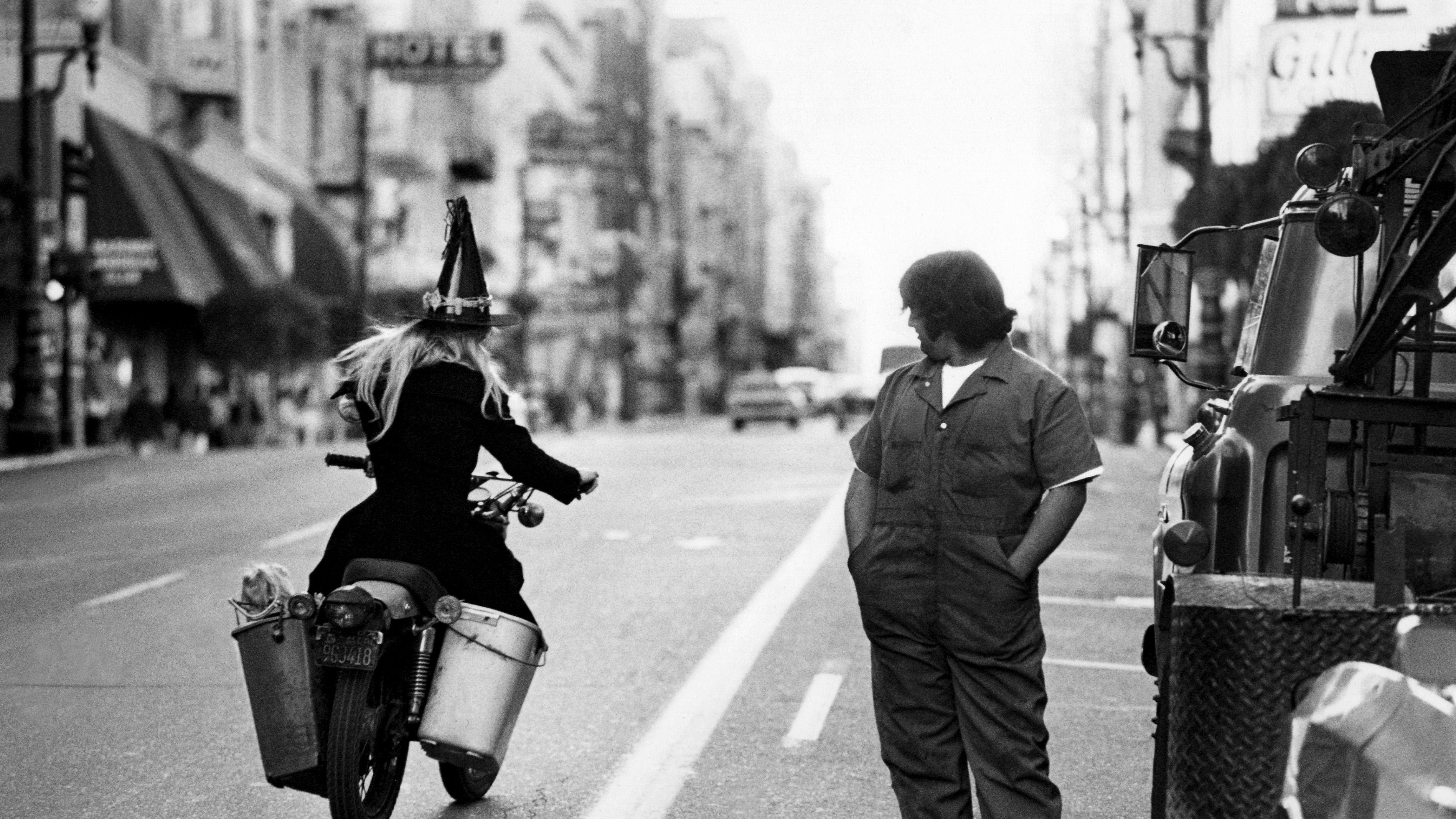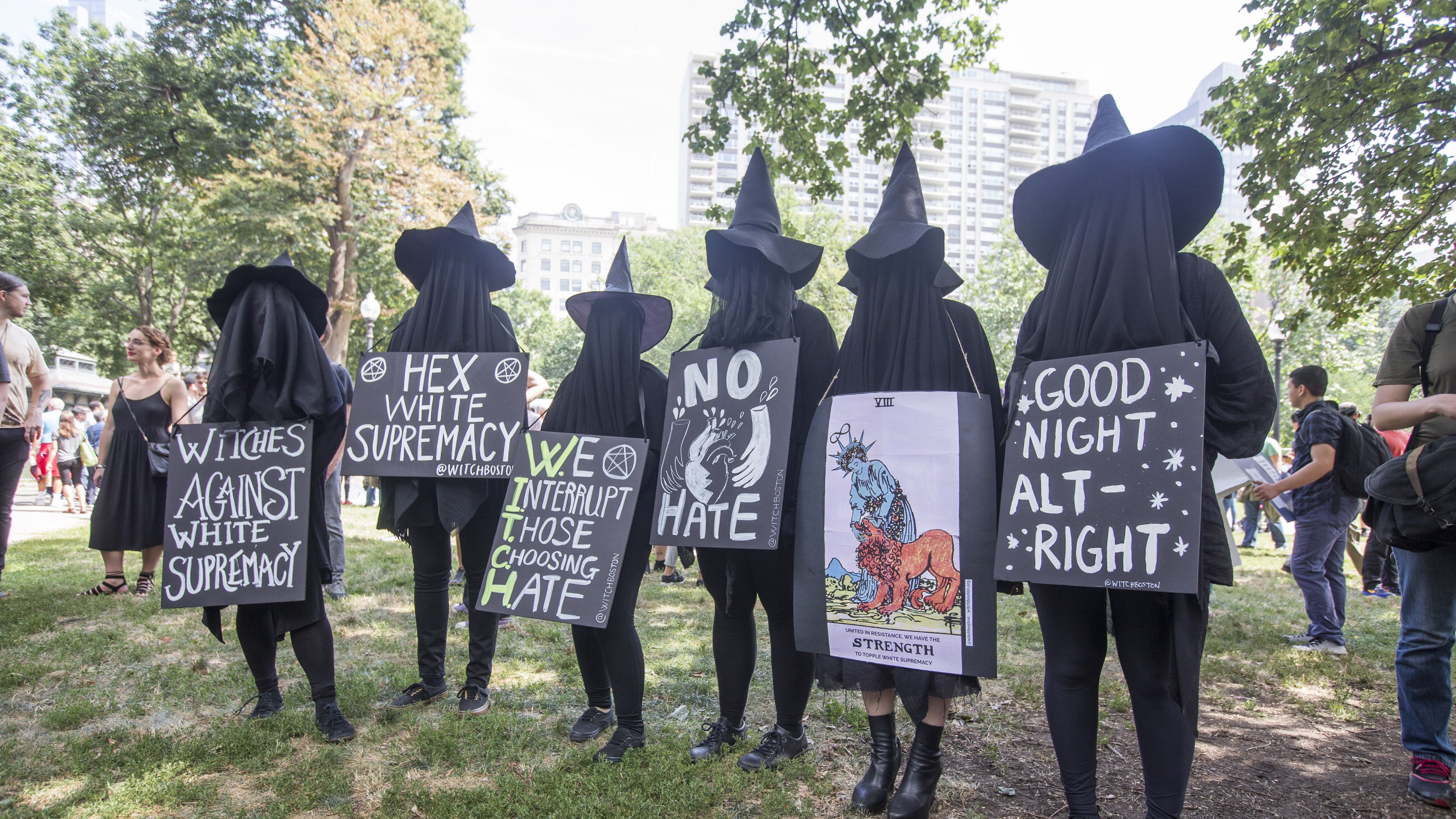This Is How Real-Life Resistance Witches Say They're Taking Down the Patriarchy
And why one witch believes their hex on Trump worked.


From the Charmed reboot to Netflix’s dark interpretation of our favorite '90s witch, the world of magic has become a pillar of pop culture. But witchcraft goes beyond what you see on TV: The practice has wriggled its way into politics, and real-life witches are doing much more than spouting out rhymes. Just ask the witches trying to take down the patriarchy with hexes (a.k.a. curses). From hexes against Brett Kavanaugh to the 13,000 “resistance witches” that have been fighting Donald Trump with magic since his election, public hexing protests are on the rise, and have gained popularity—and notoriety—from non-witchfolk and witches alike.
According to Dakota Bracciale, the co-owner of a Brooklyn occult store responsible for organizing a recent public hexing against Brett Kavanaugh, using spells for political protection is nothing new. “[Witchcraft] was always practiced by the people who were the outliers, who were on the fringes,” Bracciale says. “Those people oftentimes had to also be the arbiter of their own justice.”
Hexing for political gain in the present day arguably began with Gerald Gardner, the man behind Wicca. Legend has it that in 1940, in the English town of Highcliffe-on-Sea, Gardner joined a local coven of witches and put a hex on Adolf Hitler. And in the half-century since, Bracciale says mass hexing protests have often targeted men who carelessly wield power—like Trump and much of his administration.
According to Bracciale, hex protests against political officials this year have been worth their weight in candles. “We hexed Trump last summer. What happened from last summer until now? I don’t know how many convictions in the Mueller probe; the Stormy Daniels scandal; the New York Times exposé on how he’s a financial vampire." Bracciale considers the Trump hex a success. "That’s something that I’m very proud of.”
A post shared by Catland (@catlandbooks)
A photo posted by on
In tandem with the #MeToo movement, some witches have shifted their hexing attention to target men accused of sexual assault, like convicted sex offender Brock Turner or, most recently, Brett Kavanaugh. The purposes of these hexes is to publicly condemn and shame these men, and in some cases inflict physical harm.
Not all witches are on the side of hexing. Stacy Rapp, owner of Enchantments, the oldest witchcraft store in New York City, does not promote dark magic. She argues that hexing could backfire and cause those being cursed to gain more power, especially when it comes to the public condemnation of political officials. “All spells work with energy and send that energy towards an intended target," Rapp says. "Even if you are trying to send negative energy, you’re still sending energy. To do a hex on Kavanaugh? You’re giving him power.”
If you are going to cast spells for political change, Rapp encourages spells that bolster social change and the progress of your favorite groups. In her store, she sells candles and materials like glitter that give costumers the option to cast positive spells to influence election outcomes, or support organizations like Planned Parenthood.
Get exclusive access to fashion and beauty trends, hot-off-the-press celebrity news, and more.
Despite differences in opinion on whether mass hexes should be utilized on "bad men," every witch I spoke to said they believed there was one key way to create change: Getting out to vote.

As feminist witch Sophia Saint Thomas puts it: “You need votes, you need millions and millions of people for change. We don’t just need very politically active leftist witches in Brooklyn. We need all of America to really cause enough change.”
So, if you really want to mess with the patriarchy this November, go vote. But: If you want to buy a candle from Enchantments and throw some rainbow glitter around to support your party this election, it may be worth the trip. You know what they say about magic—it works in mysterious ways.
RELATED STORIES


Megan DiTrolio is the editor of features and special projects at Marie Claire, where she oversees all career coverage and writes and edits stories on women’s issues, politics, cultural trends, and more. In addition to editing feature stories, she programs Marie Claire’s annual Power Trip conference and Marie Claire’s Getting Down To Business Instagram Live franchise.
